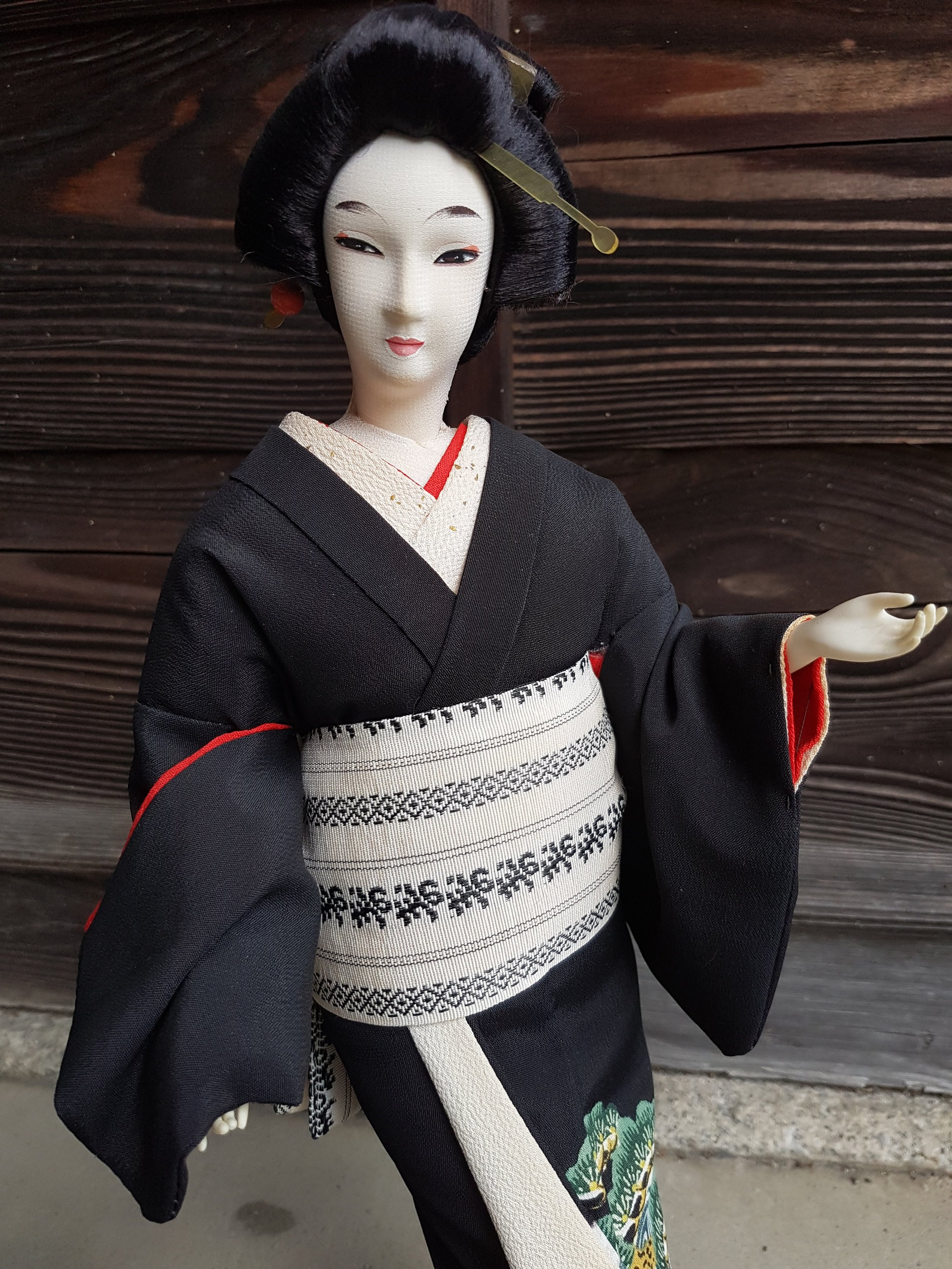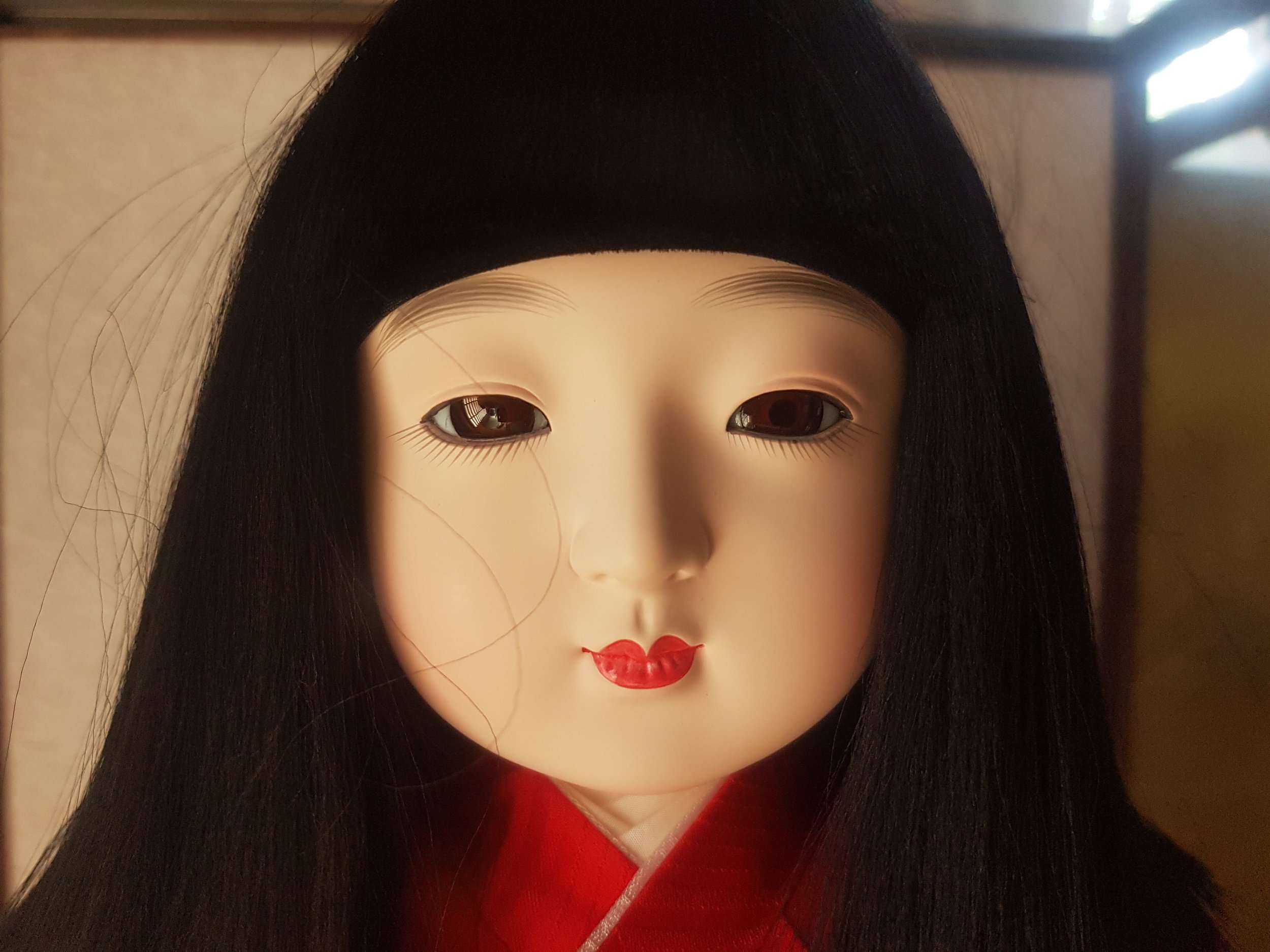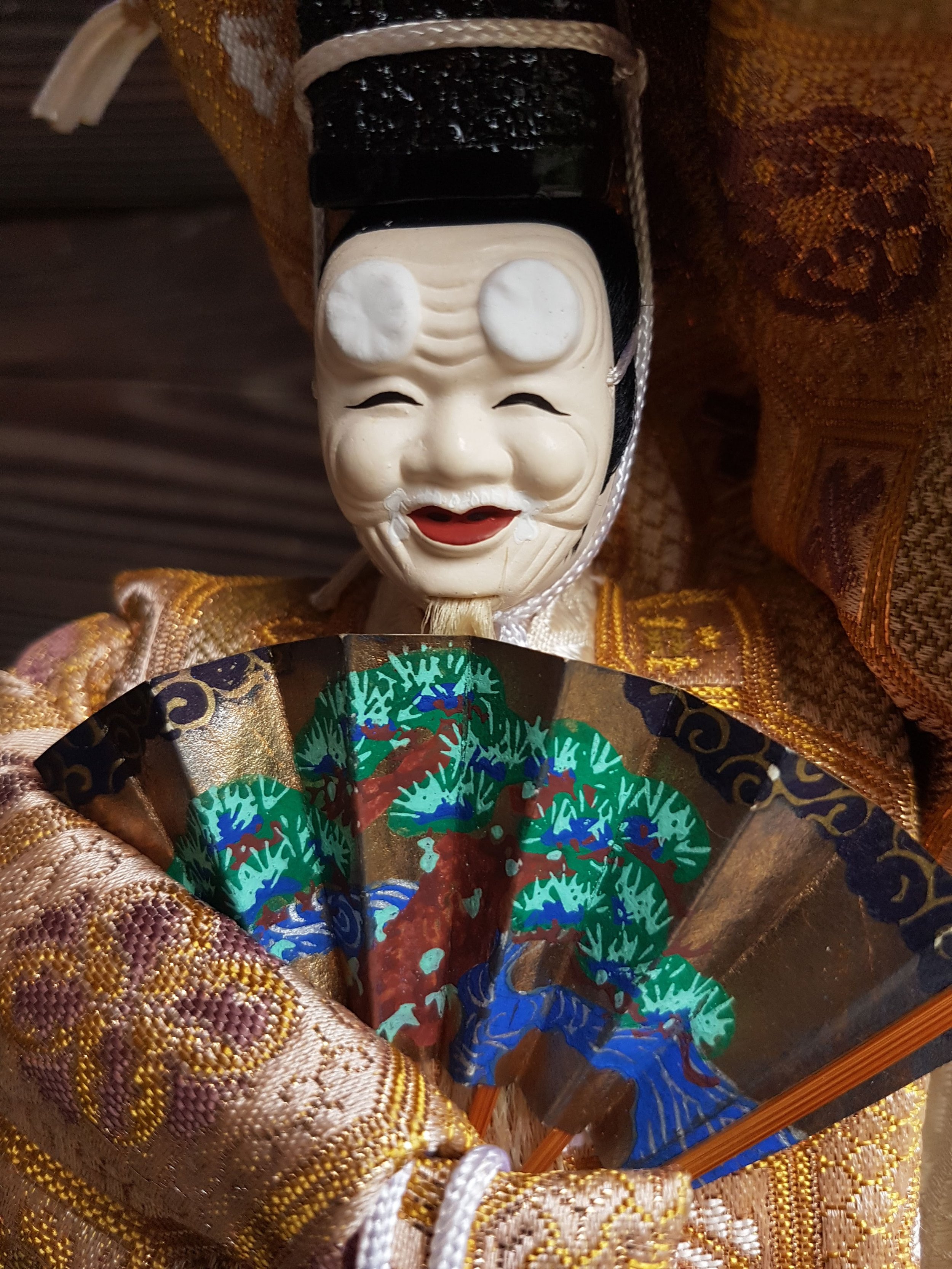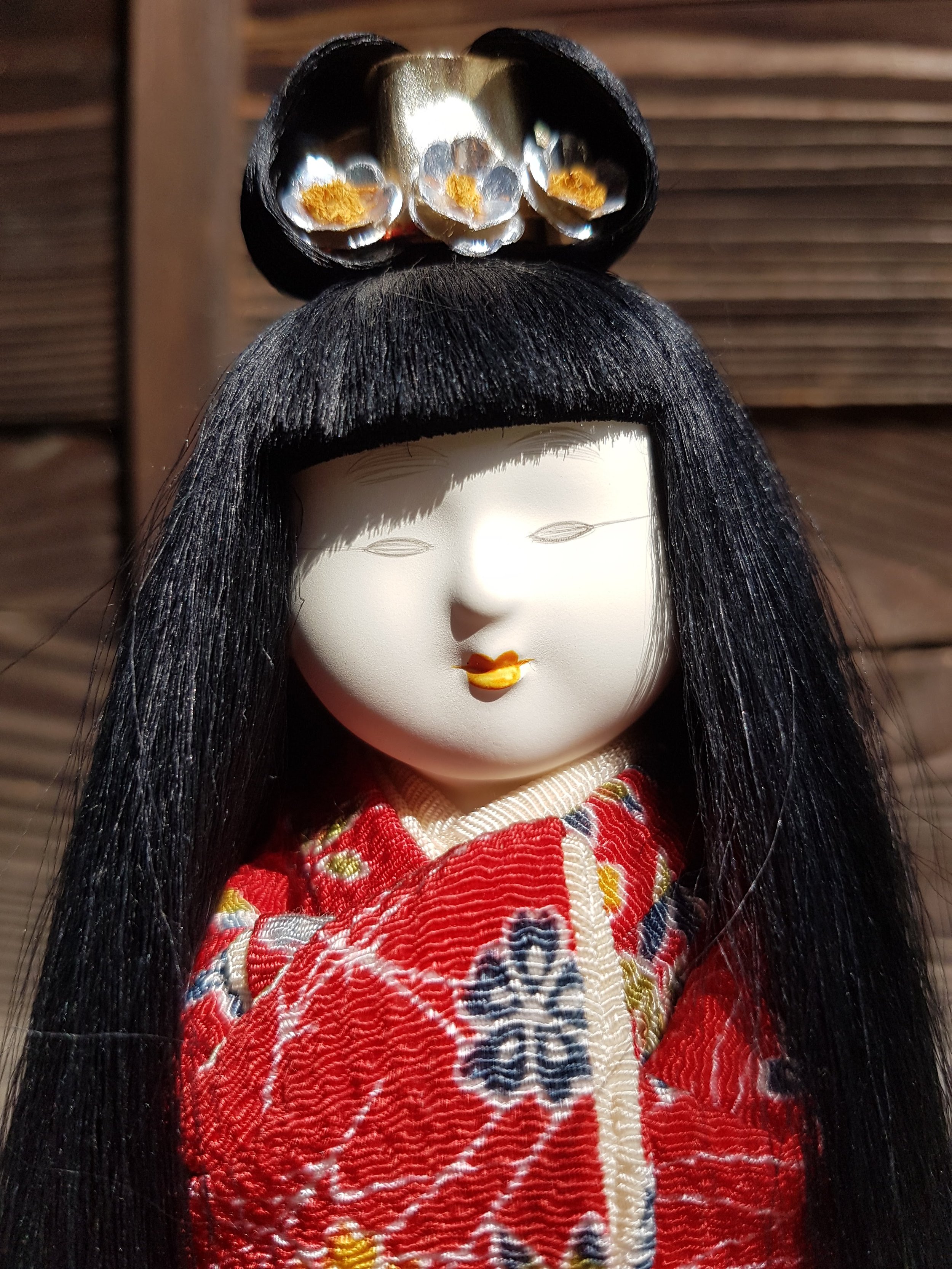Japanese Temples Are Holding Funerals For Unwanted Dolls
An unwanted doll that was donated to Camellia Tea Ceremony for a proper disposal and send-off. Photo courtesy of Camellia Tea Ceremony.
Toys don’t last forever, and kids grow up. Interests come and go, and a once-beloved plaything winds up in storage, at a yard sale or in the trash. This is the fate of many toys in the U.S. — particularly after the winter holidays — but in Japan, that is not the necessarily the case, at least for dolls.
Throughout the year, temples across Japan hold a “ningyo kuyo” (人形供養), a funeral ritual for unwanted dolls — especially traditional dolls. Held in both Buddhist and Shinto temples alike, the ceremony is a spiritual send off to thank dolls for their service and properly put them to rest.
Shinto and Buddhism are the two dominant religious influences on Japanese culture. Even with a population that is largely religiously unaffiliated today according to the JGSS Research Center at Osaka University of Commerce, these two religions continue to have a powerful spiritual influence on secular culture.
The Shinto belief of animism, as an example, teaches that everything can have a spirit or soul. The doll funeral speaks to this idea. After prayers and goodbyes are said, the ritual ends with a burning of the dolls, or sometimes, they are simply discarded.
“It is common, with limited space in Japan, that many families are now throwing away their traditional dolls,” wrote Kieren, the social media manager of Camellia Tea Ceremony, in an email interview. The funeral is a welcome solution.
READ: The Religion of Marie Kondo and Her Kon Mari Method of Tidying
Camellia Tea Ceremony, located in Kyoto, is a traditional tea house that welcomes guests to participate in a sacred Japanese tea ceremony, or “sadō” (茶道), that has existed for centuries. While modern tea houses serve as gathering spots and cafes, traditional tea houses still punctuate the landscape as a tribute to Japanese culture, hospitality and experience.
Because of the tea house’s connection to Japanese tradition, it is not unusual for Camellia to receive donations of traditional items — such as folding screens or harps — that are no longer wanted, Kieren said. Recently, one family gifted the tea house with a “huge” donation of traditional dolls.
“We first asked if anyone would like them,” Kieren wrote. “There were no takers, so we decided to dispose of them through a temple.”
Kyoto is also home to one of the most well-known Buddhist temples that perform the ningyo kuyo ceremony, Hōrin-ji. It is famous because of what Kieren calls its “pedigree.”
“It was once an imperial nunnery and many precious dolls gifted by past emperors to their daughters are preserved here still. Thanks to these old imperial connections, the temple remains fairly prominent in people’s minds,” he wrote, adding that doll memorials also provide revenue for the temples.
Families pay a fee to have their unwanted doll included in the ningyo kuyo. In return, the family gets to formally say goodbye, which can be cathartic, acting as a spiritual closing of doors and a moving on, Kieren said.
“There is something comforting about giving a loved toy or doll a proper send off,” he added.
An unwanted doll that was donated to Camellia Tea Ceremony for a proper disposal and send-off. Photo courtesy of Camellia Tea Ceremony.
Do dolls have souls?
Alongside respectful disposal, there is another cultural legacy driving the doll funeral tradition. In Japan, there is a long-held cultural belief — or perhaps simply superstition — that dolls can become ensouled, particularly once they are more than 100 years old. This belief, though not necessarily one that is widely held in modern day, finds its roots in Japanese folklore.
In essays first published in 1894, Greek journalist Lafacdio Hearn captured the essence of this belief, saying, “(A) new doll is only a doll. But a doll which is preserved for a great many years in one family and is loved and played with by generations of children, gradually acquires a soul.”
According to the essay, Lafacdio asked a young girl how this was possible, and she responded, “If you love it enough, it will live.”
While the possibility of ensoulment does extend to other inanimate objects, it is most attributed to dolls, simply because of their human appearance. In fact, the kanji for doll (人形) literally translates to “human form doll,” or ningyō.
According to cultural anthropologist Komatsu Kazuhiko, the origins of this belief can be traced back to the latter part of the “muromachi,” or medieval, period from 1336 to 1573, when “yokai” (妖怪) stories were first recorded and no longer strictly oral.
Yōkai is the term for spirit or apparition, although it has evolved to mean traditional folklore, according to Kazuhiko.
Due to this new written storytelling form, tales of spirits and demons were able to quickly spread from the elite to the common people, gaining popularity.
“It was during this medieval period the Japanese began expanding their concept of animism to see spirits even in man-made objects,” Kazuhiko wrote in his book “An Introduction to Yōkai Culture.” The ensoulment can occur with any inanimate object, not just dolls.
Camellia Tea Ceremony sits close to a road called “Ichijo-dori,” Kieren said, where medieval folklore tells the story of ensouled objects, or “tsukumogami” (付喪神), “marching on summer nights, terrorising the local people.”
The term tsukumogami, a form of Yōkai, is used for inanimate objects that have gained a spirit, but it was originally reserved for tools that reached 99 years old. This folk legacy persists into modern day with objects other than dolls, including needles and other toys. However, it remains most powerfully ascribed to dolls.
An unwanted doll that was donated to Camellia Tea Ceremony for a proper disposal and send-off. Photo courtesy of Camellia Tea Ceremony.
Doll mythology in the East and West
A fascination with living dolls or the possibility of ensoulment is not unique to Japan. Folk stories the world over tell of animated dolls, such as the popular Italian story “Pinocchio,” originally written by Carlo Collodi and most famously adapted by Walt Disney. Pinocchio is a mischievous living puppet who dies in the original story but in Disney’s version is granted redemption and awarded with a real boy’s life.
In the United States, animated dolls are more typically associated with horror, such as the famed doll Annabelle who was investigated and held by Ed and Lorraine Warren or the notorious Robert who was the model for the murderous Chucky in the “Child Play” film franchise.
The Advanced Training Institute, a homeschooling program made famous by TV reality stars Jim Bob and Michelle Duggars, supported the idea that Cabbage Patch Kids, the popular Coleco doll of the 1980s, could become possessed. Burning was the solution. Founder Bill Gothard, who developed the program as part of his ultraconservative Christian organization Institute of Basic Life Principles, first shared these beliefs when a satanic panic was sweeping the nation in the 1990s.
The key difference between the typical modern American belief and that of Japan is found in the spiritual fabric of its culture.
“Animistic ideas remain fundamental to Japanese culture to this day,” Kazuhiko wrote. Even if it’s not adhered to overtly as part of religion, the concept is woven into the nation’s culture. Everything has or can have a spirit.
While a traditional Japanese doll can be troublesome and even possessed by an “oni” (鬼), or demon spirit, it also can also become ensouled with something beautiful and helpful.
In his 1894 accounts, Hearn told the story of the one beloved doll that had acquired a soul and was revered as much as a “kami,” or deity. A childless women would borrow the doll, take good care of it and give it new clothes — all in hopes that the doll would bring her a child.
Bill Ellis, a professor emeritus at Penn State University who specializes in folklore, explained that Japan has a “broader definition of self-awareness, which is shared by humans, animals, and plants, and natural objects generally,” than most Western cultures.
By contrast, most American doll-based traditions have Christian origins. Annabelle or Robert is taken over specifically by Satan or a satanic demon. The Cabbage Patch Kids warning is similar.
Christian theology generally does not accept the “expanded sense of spirit” found in Japanese culture, Ellis said.
“Shinto … is founded on this notion of universal consciousness: everything is alive, everything has a consciousness (or soul, if you're religious),” he said. “And it follows that the closer relationship one has with an object, the more that object's personality will be influenced by yours.”
Such an attachment can exist in Western culture, but it is not dominant. Animistic belief “has been made more fully part of the institutional life of Japanese religions and public life,” Ellis said.
While burning the living doll appears to be the solution in both cultures, the Cabbage Patch Kids were simply thrown in a fire without ritual. The Japanese answer is more refined.
“Just like a funeral, a priest gives the memorial, and the items are ceremonially burnt,” Kieren said.
An unwanted doll that was donated to Camellia Tea Ceremony for a proper disposal and send-off. Photo courtesy of Camellia Tea Ceremony.
The place of dolls in Japanese culture
Outside of medieval stories, superstitions, and Yōkai, dolls play a prominent role in Japanese culture generally. They are “bought to celebrate the birth of girls” and for the March 3 “Hina Matsuri” ( 雛祭り), a doll festival, he said. These traditional dolls are called “hina ningyo” (雛人形).
Families display traditional dolls and others like them during different holidays throughout the year. Dolls are enjoyed, revered and, in some cases, still feared.
When the Camellia Tea Ceremony house tried to give away the donated collection of dolls, the offers were rejected by some due to pure superstition. What if the doll does become ensouled? This still remains one of the reasons people bring dolls to the temples for a proper funeral. Nobody wants their beloved family heirloom to become a troublesome tsukumogami.
Elizabeth Tucker, a distinguished service professor of English at SUNY-Binghamton and a folklorist, said people are afraid of human-like things looking too human. She used the term “uncanny,” first coined by Sigmund Freud.
It is hard to accept things that are not alive looking like things that are, she said. Tucker owns her own “haunted doll” named Tina, who allegedly loves to break electronic equipment.
Folk beliefs, even in modern times, have a way of sticking around, both scaring and fascinating people. In Japan, Yōkai culture generally has grown in popularity over the last few years, according to Kazuhiko, including a fascination with living dolls.
Japanese visitors often visit temples with dolls and attend ningyo kuyo just to observe the funerals. Haunted dolls can be easily purchased on eBay. Popular manga comics like “Rozen Maiden” incorporate living dolls into their narrative.
In 2016, Osaka-based Universal Studios Japan created a haunted doll attraction called Tatari: Curse of the Living Dolls. The attraction’s traditional dolls were supplied by Awashima Shrine, known for its expansive doll collection. Like Kyoto’s Hōrin-ji, Awashima offers a ningyo kuyo ceremony. Located near the coastal town of Wakayama, Awashima priests send donated dolls off to sea — rather than burning them — as part of its annual Hina Matsuri celebration.
When the haunted doll attraction opened with the dolls from Awashima, the theme park received backlash from both doll makers and doll owners alike, which demonstrates the complex and dynamic role that dolls play in Japanese culture.
Whether you are superstitious or not, Kieren said, at the heart of the tradition “is a message about … taking nothing for granted … showing that we should always give thanks for the most mundane items.”
Heather Greene is a freelance journalist, editor and author of “Lights, Camera, Witchcraft: A Critical History of Witches in American Film and Television.” She is the former managing editor at Llewellyn Worldwide. Her writing has appeared in Religion News Service, Circle Magazine, The Washington Post and more. She has a master’s degree in film studies from Emory University and is a member of the Religion Newswriters Association and Covenant of the Goddess. Heather has been writing and presenting on the cross sections between belief, pop culture and alternative spirituality for over 20 years. Follow her on Twitter @Miraselena01.




